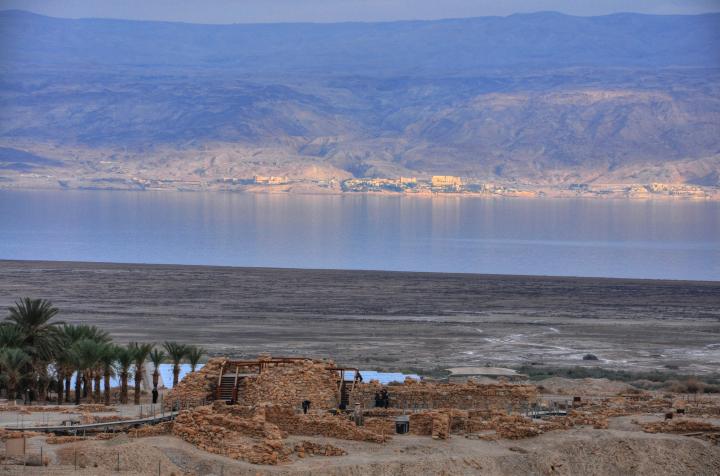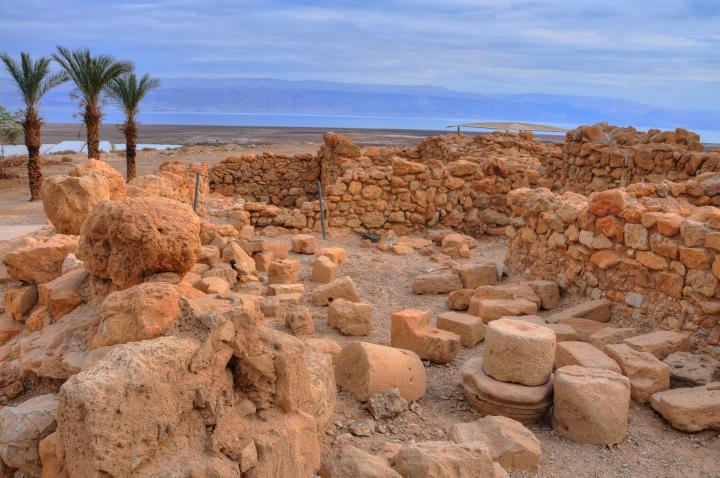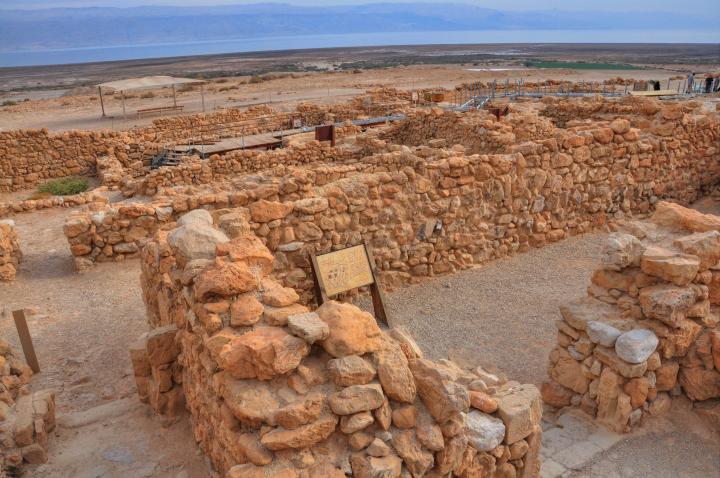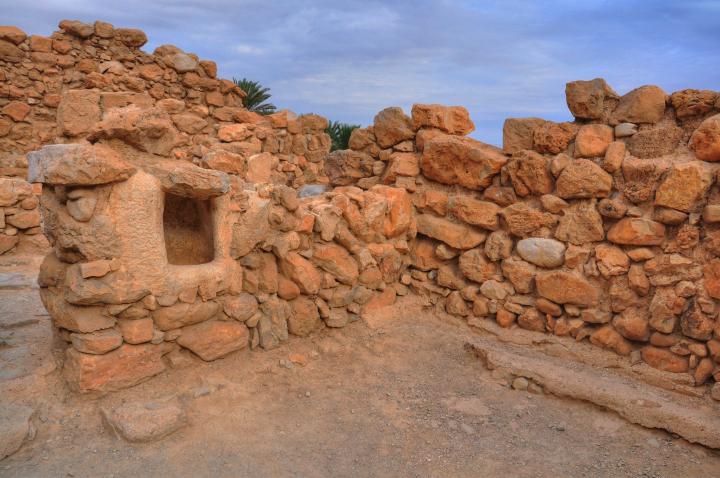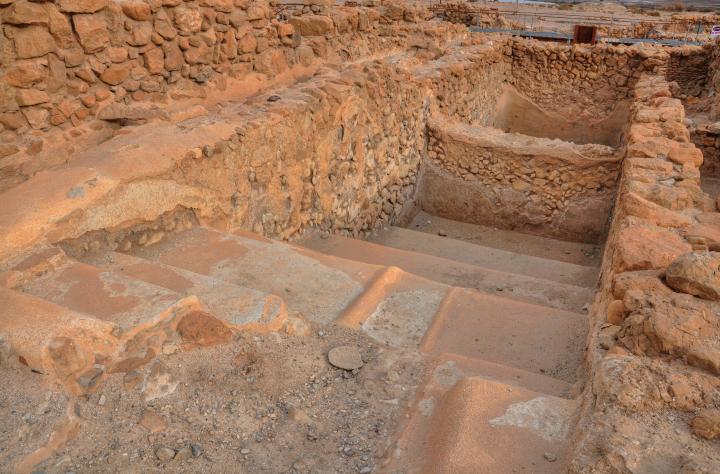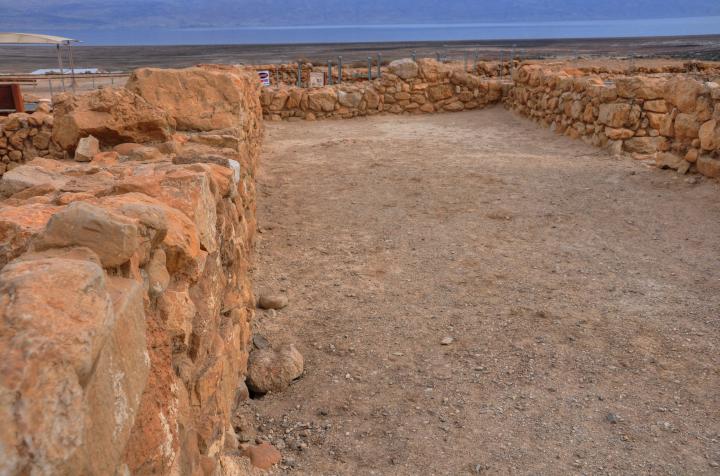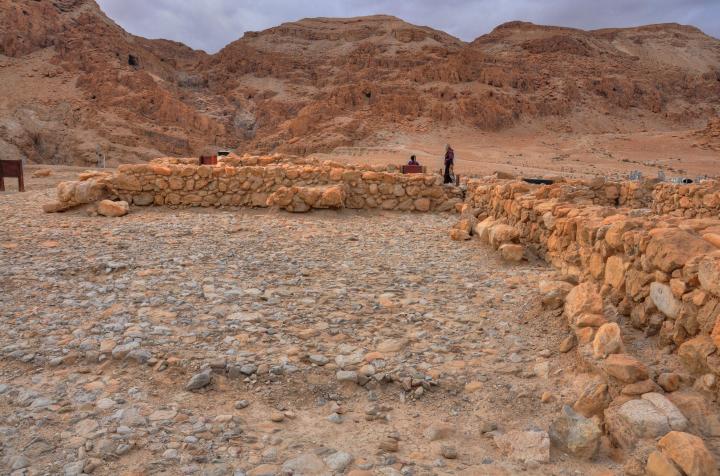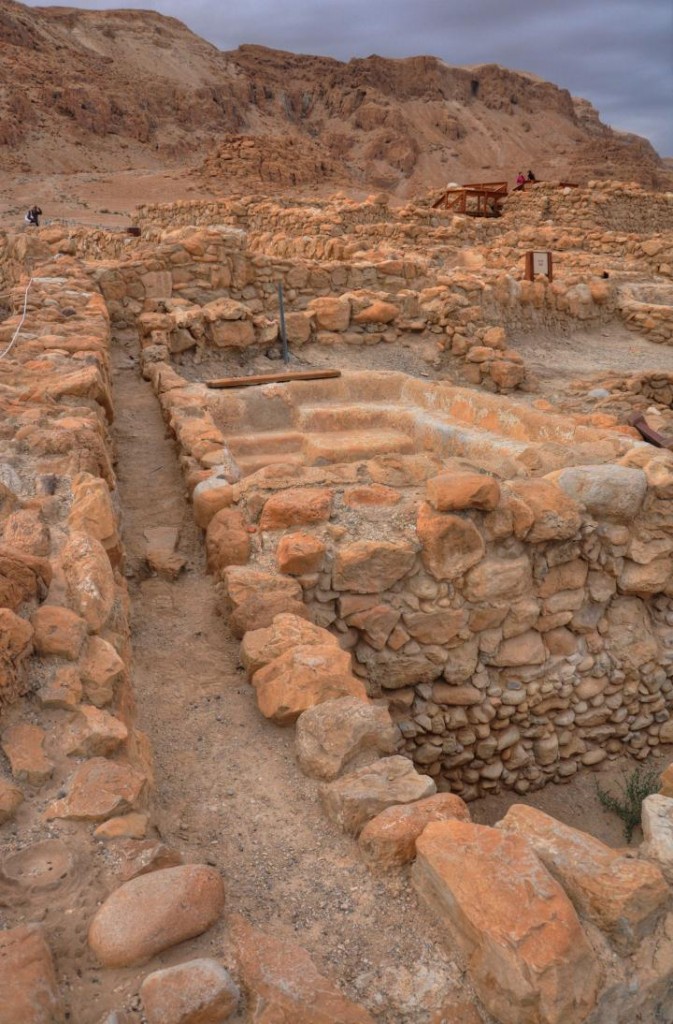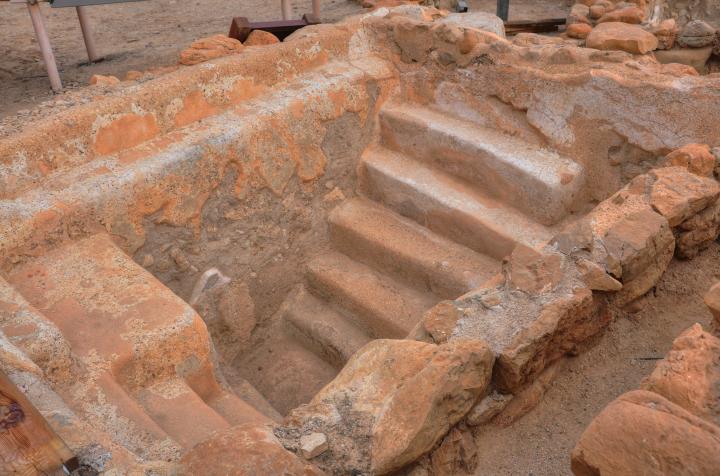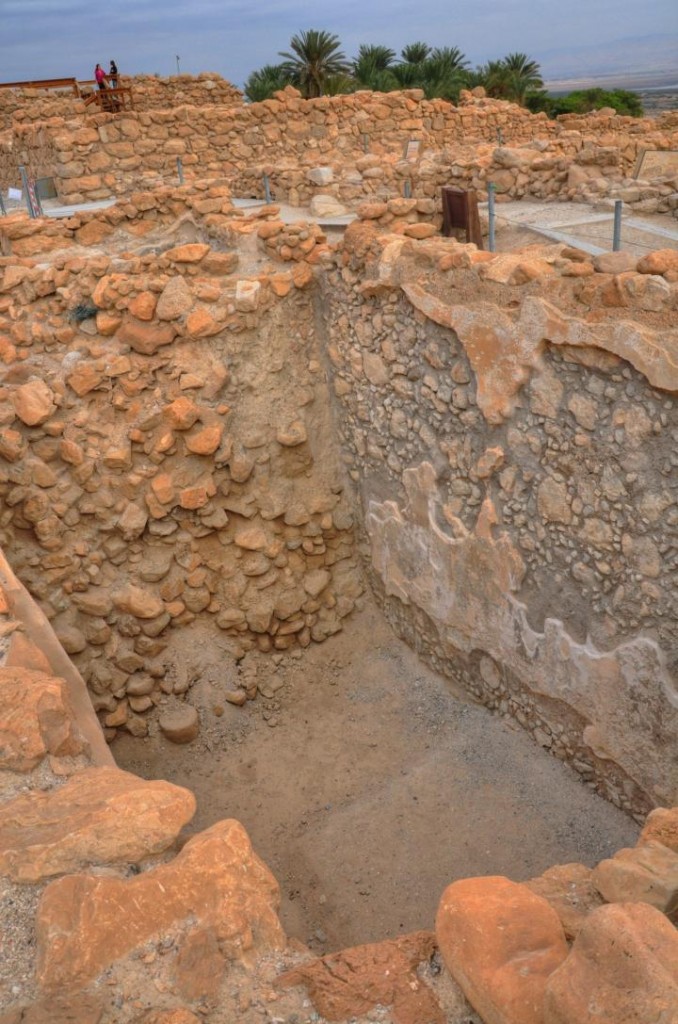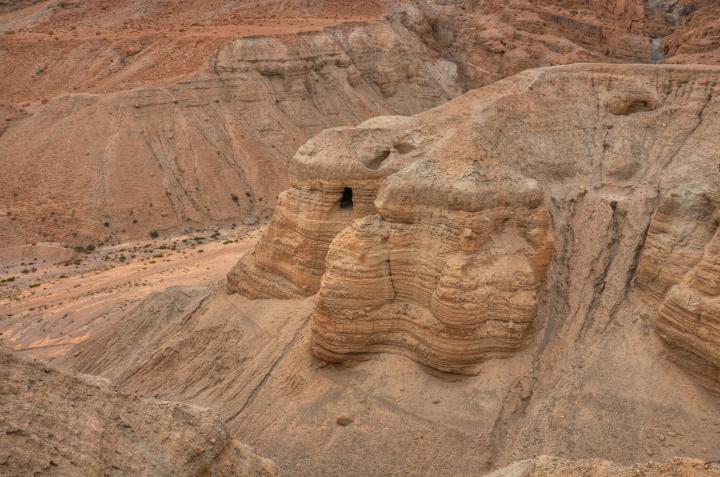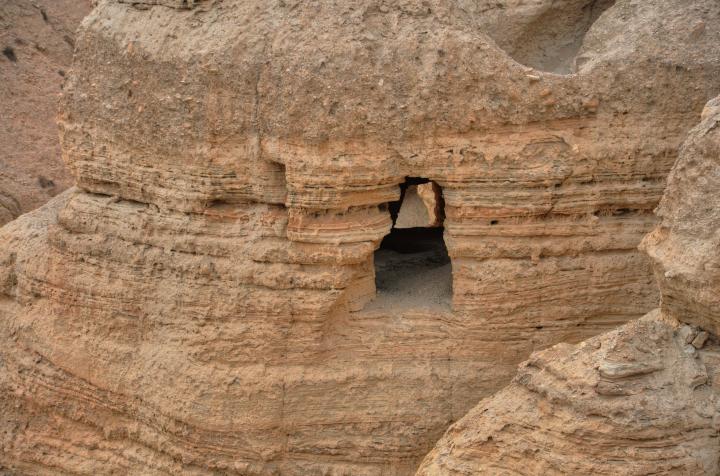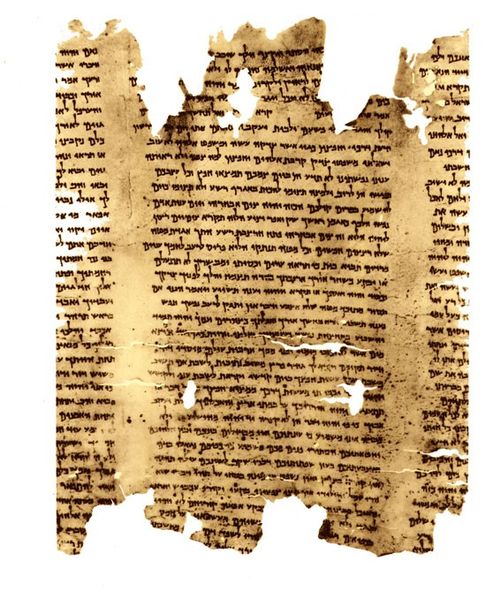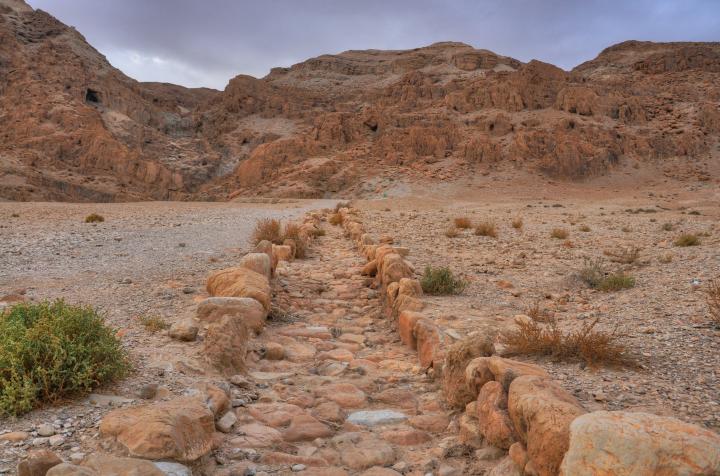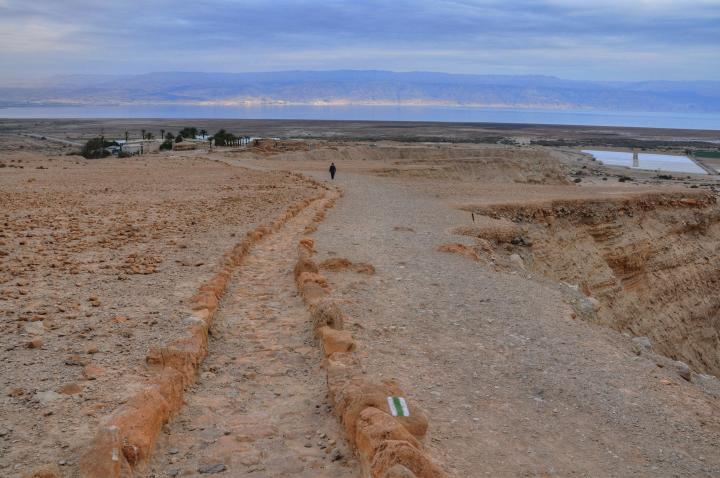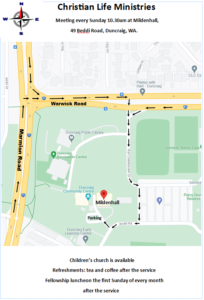Qumran
Qumran
Qumran, also known as (Kumran) is located in the West Bank just south of Jerico. The Qumran settlement was on a dead-end road. It was a perfect location for the isolationist sect known as the Essenes to live. The Essenes were extreme sect of the Pharisees. Disapproving of the religious practises at Jerusalem, the Essenes withdrew to the isolated plateau region of Qumran near the Dead Sea.
A small square tower is located on the northern side of the settlement. Beyond the tower is the northern side of the Dead Sea.
The Settlement
 The Qumran settlement is on a dry plateau on the northwestern shore of the Dead Sea. It is located about 2km from the spring/oasis called Ein Feshcha which supplied abundant water to irrigate the area. This ‘City of Salt’ was one of the frontier posts of the tribal territory of Judah.
The Qumran settlement is on a dry plateau on the northwestern shore of the Dead Sea. It is located about 2km from the spring/oasis called Ein Feshcha which supplied abundant water to irrigate the area. This ‘City of Salt’ was one of the frontier posts of the tribal territory of Judah.
Qumran (Kumran) is best known as the settlement that is closest to the caves where the Dead Sea Scrolls were discovered. Recent excavations have revealed that the Essenes actually lived in caves and tents around the mains settlement complex. This suggests that the main complex with its communal area, scriptorium, ritual baptismal baths, cisterns, assembly room, “refectory” or dining area, kitchen and stables were primarily reserved as the cultic centre of the Essenes.
The Essenes lived a communal life and the community shared all their possessions. They never married. They practised frequent baptism because they desired to be ritually pure when the Lord returned. An aqueduct supplied water to an elaborate system of reservoirs and ritual baths.
Archaelologists believe that Qumran is one of a series of fortresses along the sourtheastern border of Judea. The Romans destroyed the Qumran settlement around 68 A.D.
The Kitchen
Above is a closer view of the kitchen and other rooms. The Dead Sea is in the background with the mountains of Jordan behind it.
The Scriptorium
The Scriptorium was the room where the scribes wrote their scrolls. Roland de Vaux, a French Dominican Catholic Priest who originally excavated this site said: “manuscripts were copied in the scriptorium of Qumran.” He beleived that the Essenes hid the manuscripts in the nearby caves when they felt their safety was threatened. Ceramic and metal inkwells have also been found.
A Stove
The Bathhouse
The Essenes practised asceticism. This was characterized by a lifestyle of absenance from various kinds of worldly pleasure. They believed in maintaining purity through symbolic ritual bathing. The ritual baths were constructed according to the Jewish religious laws: the structure was built in the rock and not above it, to be in direct contact with the ground. The water should flow, undrawn, into the pool. There are two sets of separated stairs: one side was for the way down to be purified, while the other side for the cleaned bathers.
Assembly Hall, Refectory and Pantry
According to the Essenes Community rule scroll ( VI, 2-5): “They shall eat in common and bless in common… and when the table has been prepared for eating and the grape juice for drinking the priest shall be the first to stretch out his hand to bless the first piece of bread [or grape juice]”.
Work Area
The excavators discovered here 100,000 date pits and an installation for producing honey from the dates. This was one of the main sources of income for the congregation.
Cisterns and Ritual Baths
During the Roman period, several cisterns, baths and ritual baths were added around the round cistern. They all were fed water by the aqueduct.
In the photo above a water chanel can be seen that conveyed water from the aqueduct to the cistern on the left and the ritual bath on the right.
Ritual Bath
Josephus writes about the ritual bathing: “…and when they have clothed themselves in white veils, they then bathe their bodies in cold water”.
Large Cistern
The photo above shows a large cistern. There are 10 cisterns in Qumran in different sizes, all connected by channels to the inlet of the aqueduct. Their walls are covered by several layers of thick plaster.
The Caves
There is a series of caves to the steep escarpment to the west of the settlement complex. These caves were used by the Essenes as a library to secure and store their ancient sacred manuscripts. Bedouin shepherds discovered the first seven srolls in 1947. Since 1947, over 900 manuscripts have been found in 11 caves around Qumran and extensive excavation have taken place of the settlement.
In this cave (cave #4) and 10 others in the area around Qumran, 15,000 fragments of scrolls were found during 1947-1956. They were later pieced together to produce 530 different scrolls, with about 200 books from the Old Testament. This restoration work was finally completed and published in 2001. The Dead Sea scrolls are one of the most important archeological findings and an amazing discovery that shed light on the early Roman period and the Biblical research.
Cave #4
Fragment of a Scroll
Below is a sample of one of the scrolls.
Aqueduct
The ancient elaborate water system kept the settlement alive in the dry climate of the Judean desert. An aqueduct, several hundred meters long, supplied the water from a dam in the course of the Qumran brook, and filled up its cisterns through an elaborate series of canals that ran between the structures. In the photo below the aqueduct is seen running up the hill towards the cliffs on the western side of the settlement.
Qumran Settlement
A view of the aqueduct running to the Qumran settlement with the Dead Sea in the background. When the cisterns ran dry, the water was carried by animals from the wells of Ein Feshcha, 3.5KM to the south.
Acknowledgement: Reference.
